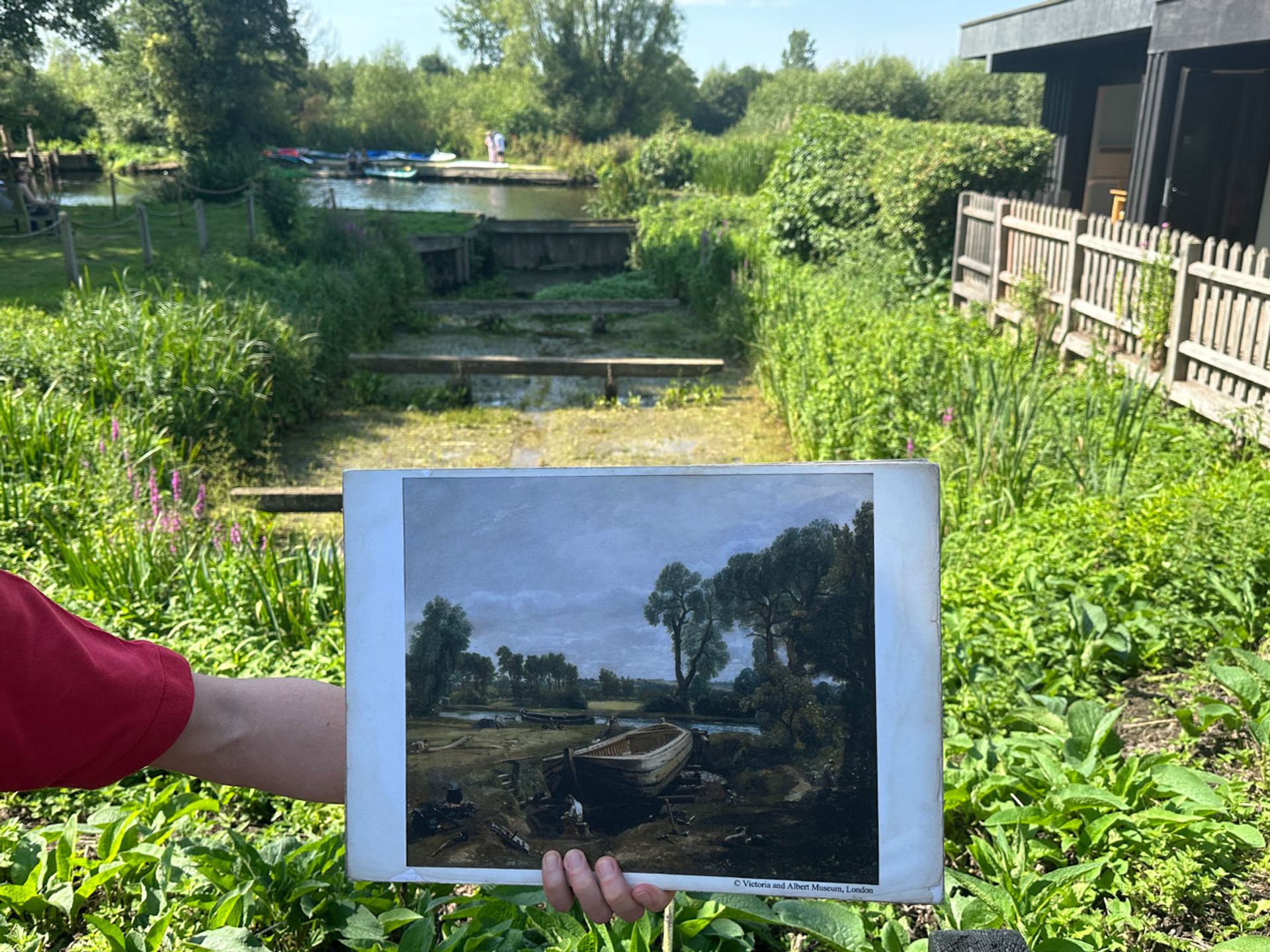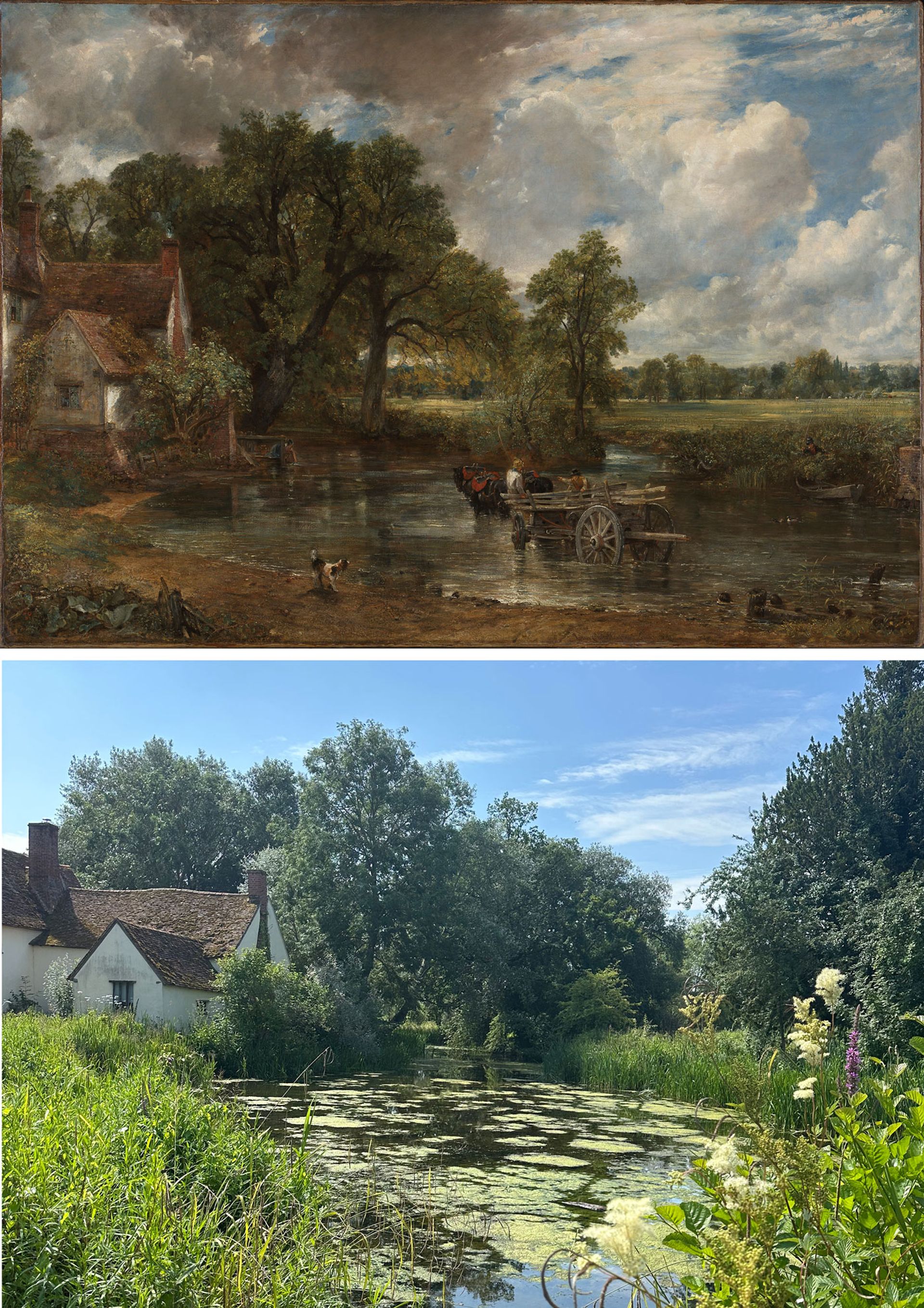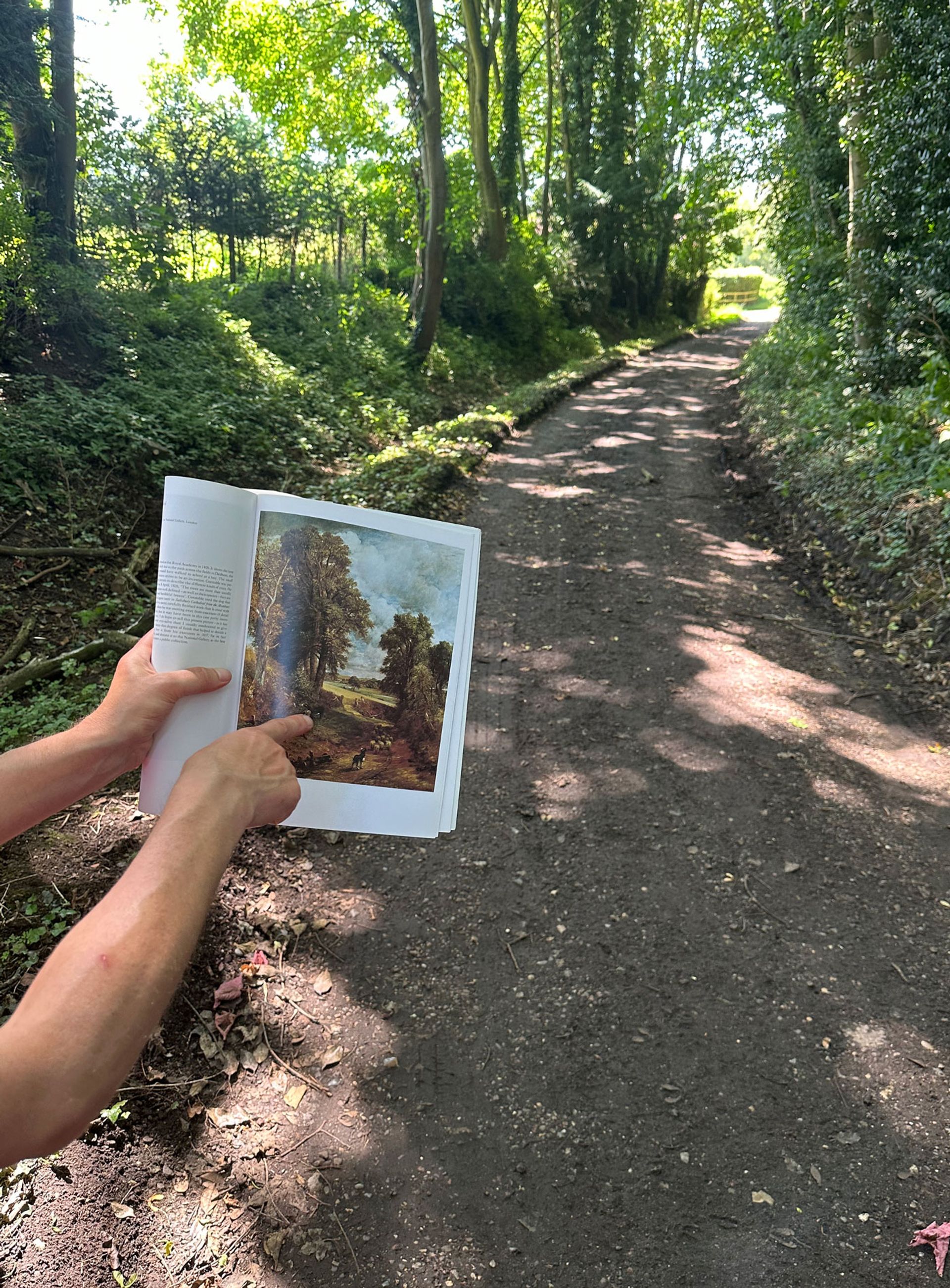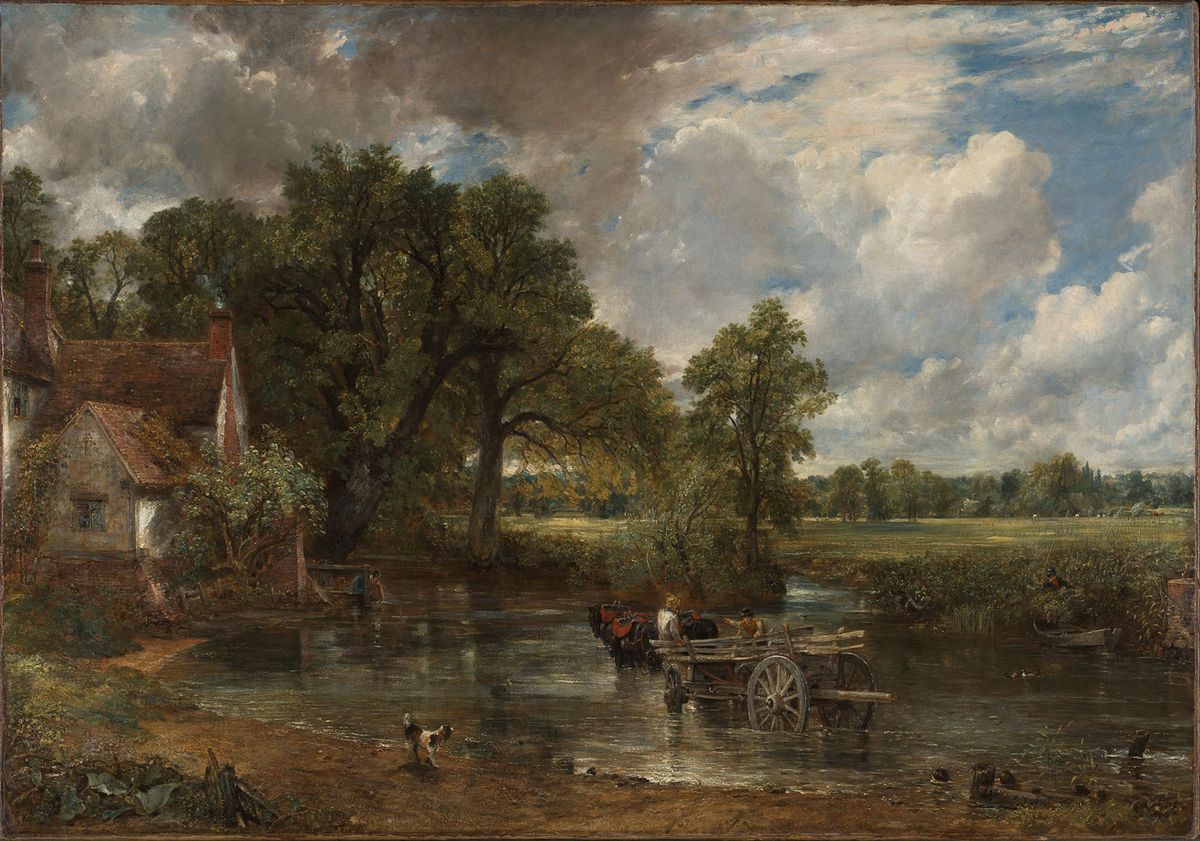Curators at the National Gallery in London will draw back the curtain on a masterpiece of British art this autumn—The Hay Wain (1821) by John Constable—which has graced mantelpieces and kitchens across the country for decades, emblazoned on prints and tea towels. As part of its bicentenary celebrations (NG200), the curators Christine Riding and Mary McMahon will “explore the social, political and artistic context of the English landscape at the time of The Hay Wain’s production”, says a statement, unravelling Constable’s depiction of the millpond at Flatford on the River Stour.
The free-admission show, part of the gallery’s Discover series, will no doubt entice devotees of the 19th-century master (and lovers of the rolling English countryside) to venture to “Constable country” in Suffolk to see the famed settings for real. “I should paint my own places best,” Constable said, expressing his love for all that lies on the banks of the Stour.

A National Trust guide demonstrates how John Constable's Boat-building near Flatford Mill (1814-15, Victoria and Albert Museum) can be compared with the scene on the banks of the river Stour today Photograph: Gareth Harris / The Art Newspaper
Boat-building near Flatford Mill (1814-15)
The first stop on the Constable trail is next to the National Trust tea room in Flatford; visitors sipping their tea and coffee can look out onto the dry dock captured in the artist’s picture, Boat-building near Flatford Mill (1814-15). The work shows a barge being constructed in a dry dock owned by Constable’s father.
When the National Trust bought nearby Bridge Cottage, which is located upstream from Flatford Mill, in 1985, the dry dock overflowed with rubbish. When the site was excavated by the River Stour Trust, its specialists discovered a disintegrating brick floor, three wooden stocks which would have supported barges and the remains of wooden pipes called chunkers, which drained water away from the dry dock into a ditch on the other side of the river. “New dock gates were made based on Constable’s original drawings and sections of the damaged dock floor were repaired with new bricks manufactured at the original Sudbury brick works,” says a National Trust guide book.
The painting is key because Constable, who worked al fresco on the piece in the summer of 1814, used “nature directly as his inspiration”, adds the National Trust, a departure from depictions of nature at the time which were often based on the study of other pictures. Constable devotees keen to examine the details of the scene more closely—note playful touches such as the dog observing the boat builder—can discover a small-scale pencil drawing linked to the painting in a sketchbook at the Victoria and Albert Museum in London, which also owns the painting. The painter C.R. Leslie praised the painting’s “atmospheric truth”, to the extent that “the tremulous vibration of the heated air near the ground seems visible”.

John Constable, The Hay Wain (1821), top, and the scene on the river Stour in Suffolk today with Willy Lott's house to the left Constable: The National Gallery, London. Photograph: Gareth Harris / The Art Newspaper
The Hay Wain (1821)
A short walk down the road from the dry dock takes visitors to one of the most recognisable and idyllic scenes in British art history—the site of the Hay Wain, which is the star of the forthcoming National Gallery show. The house on the left was owned in Constable’s time by the tenant farmer Willy Lott while the title, The Hay Wain, refers to the wooden wagon (wain) used for transporting cut and dried meadow grass (hay).
The former Tate curator Anne Lyles outlines in the catalogue important extra details: “Three horses seem to be pulling the cart. It is also evident from the representation of the cart in both the full-scale sketch and the final painting that it has just started to turn its front wheels with the intention of swinging round to the right, in order to weave its way through the ford to reach the main course of the river and thence up the shallow bank onto the field where it will shortly join the harvesters in the distance.”

John Constable, oil sketch for The Hay Wain, about 1820. There is an elder tree at the scene today, which flowers in June, just as it does in the painting © Yale Center for British Art, New Haven, Connecticut. Paul Mellon Collection
On a guided tour around the area, a National Trust spokesman provides further insights. “Look how Constable shortened the roof of Willy Lott’s house a little to fit it into the painting— otherwise it's fairly similar. The bread oven, which was on the right-hand side, has now gone. But there is an Elder tree there, which if you come in early June is in flower and it looks just like it does in the painting, which is fantastic.” But why is the wagon in the water? “One of the theories is that the wooden wheels are being staunched. The wood would shrink in the metal frames and so they'd pause in the water to expand the wood,” added the National Trust spokesman.
Crucially much activity goes on behind the scenes to keep Constable’s scenes recognisable. “We have something called the view management plan… we go back and compare his paintings with maps and different views to actually try and get a realistic understanding of what the landscape might have looked like, and actually best manage the landscape in that way.”

A National Trust guide demonstrates how John Constable's The Cornfield (1826, National Gallery, London) can be compared with the scene today Photograph: Gareth Harris / The Art Newspaper
The Cornfield (1826)
A short walk from the Hay Wain scene, about half a mile away, brings Constable acolytes to a path well trodden by the artist, and depicted in his 1826 work The Cornfield. This busy scene—dotted with a meandering river, donkey and poppies—is based on Fen Lane, along which Constable walked as a boy from his own village of East Bergholt to Dedham, where he attended school. The wooded setting in real life is largely untouched, resembling to a surprising extent the scene painted almost 200 years ago (note though that Constable created this view in his London studio).
“This painting is packed full of interesting details… the scene is rich with flora and fauna. Trees dominate the left- and the right-hand side of the painting and include oaks, a line of elms and a silver birch,” says Mary McMahon, the National Gallery’s former Bernays curatorial fellow of British painting, in a YouTube discussion of the work. Focal points draw the viewer in such as the young boy dressed in a red waistcoat sipping water from a stream.

John Constable, The Cornfield, 1826 © The National Gallery, London
His technique, innovative at the time, stands out. “The artist used palette knives and brushes in his work and wanted to create a range of textures in his paintings similar to those seen in nature but this texture caused some contemporaries to object to his pictures and describe them as unfinished,” adds McMahon. Crucially some elements of the painting are invented such as the village and church in the distance, endowing the work with intriguing artistic licence. This adds extra resonance, prompting the viewer to question what the artist is drawing on exactly to drum up the details. “The painting is part observation of a real place… it’s part memory of a location from his childhood, it’s partly constructed in response to the traditions of landscape painting,” adds McMahon.
Postscript
Before leaving Constable country, it is worth popping in to St Mary’s Church, Dedham, where The Ascension, 1821, one of only three religious paintings by the artist, can be savoured. The picture depicts the floating figure of Christ. “Constable did complete the painting although the lower half shows less commitment than the upper,” says a statement from the Constable Trust charity; visitors can decide for themselves if the composition is uneven.


